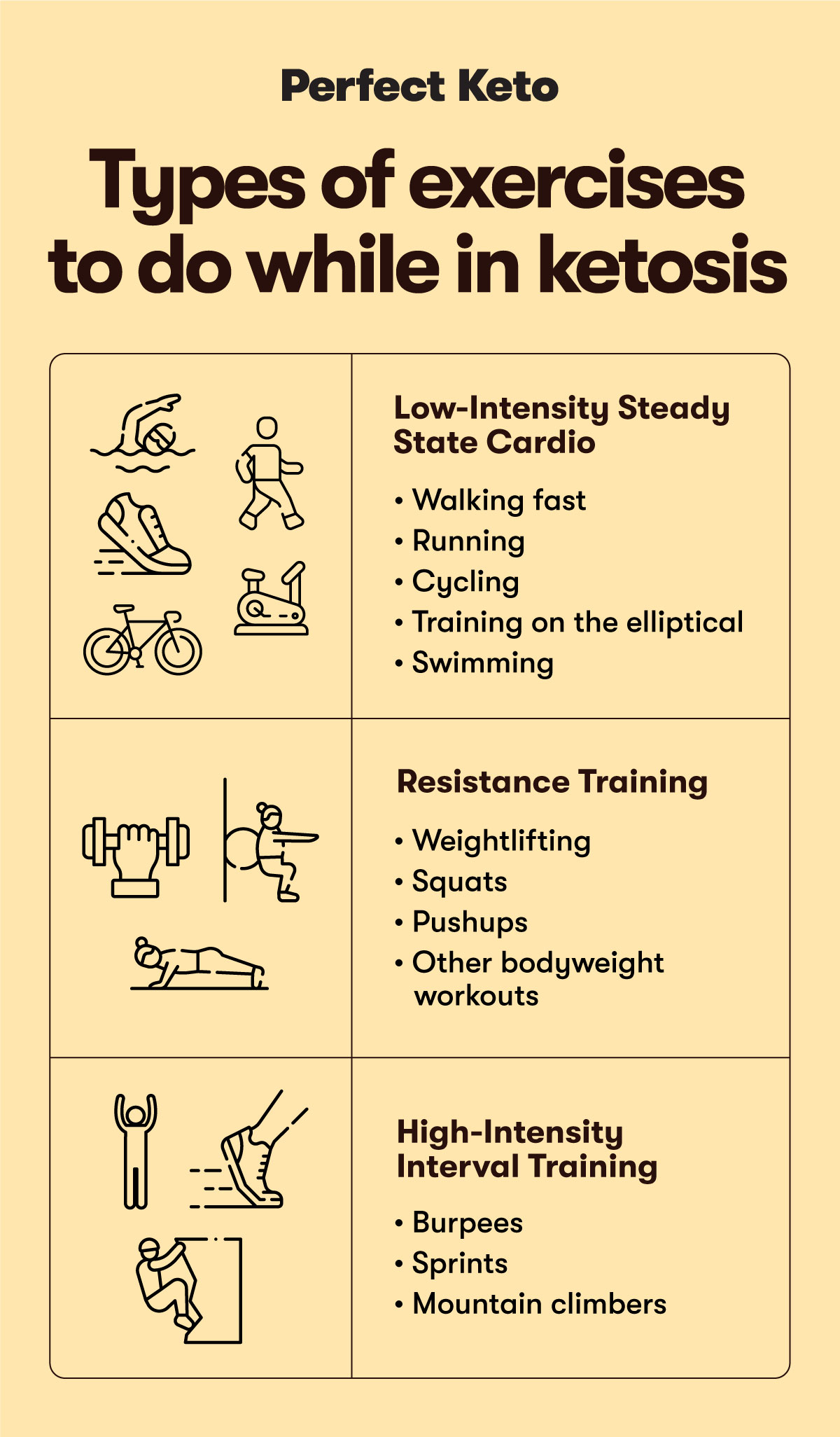Whether or not you follow the keto diet, exercise has been considered an important strategy for keeping fit and healthy. But for those who are on this diet plan, we might ask: “Does exercise speed up weight loss in ketosis?”
Ketosis, by definition, is a natural metabolic state wherein our bodies burn fat for fuel instead of glucose (*). That said, ketosis leads to weight loss as one of its biggest benefits.
Here’s what you need to know if you’re looking to lose more weight on keto by incorporating exercise into your routine.
Does Exercise Affect Ketosis?
Exercise impacts ketosis by making it easier for you to enter this state. Anyone who starts a keto diet will be able to reach ketosis sooner through exercise, which works by depleting glycogen stores.
Glycogen is the storage form of glucose from the carbohydrates you eat.
Once glycogen storage gets depleted your body starts metabolizing fat (*). As a general rule, longer and prolonged physical activity degrades muscle glycogen more quickly than mild exercise.
A 2018 review article mentions that repeated sprinting — a high-intensity activity — quickly lowers glycogen stores despite its short duration. The same thing happens with endurance training, which lasts several hours (*).
While exercise speeds up ketosis, it’s also important to note that a lack of carbohydrates may negatively affect your exercise performance. Having high levels of glycogen is necessary for strenuous workouts to boost your output.
This will explain why exercises that entail bursts of energy can be more difficult for people on a ketogenic diet.
Does Exercise Speed Up Weight Loss in Ketosis?
Exercising while in ketosis accelerates weight loss. This is because glycogen stores run out the longer and harder you work out. Combined with a very low-carb diet, which also reduces glycogen, you’ll take your weight loss to the next level.
Besides that, working out in ketosis leads to greater weight loss by preserving lean muscle mass. The more lean muscle you have, the higher your resting metabolic rate or resting energy expenditure (REE) (*).
What this means is that your body burns more calories even when resting, thanks to your muscle tissue, which is more metabolically active compared to fat tissue. Note that among the different types of workouts, resistance training (or lifting weights) is the most effective for preserving and increasing muscle regardless of age.
Exercising during an intermittent fast as part of a ketogenic lifestyle will also boost your fat-burning capacity, on top of inducing long-term adaptations that ultimately benefit your performance and health.
What Types of Exercises Should I Do While in Ketosis?
Learning how to speed up weight loss ketosis also requires knowing which physical activities are better suited for you.
Most people who are new to the keto diet find low-intensity steady-state (LISS) cardio more tolerable than higher-intensity sessions (HIIT). What’s even better is that continuous aerobic exercise doesn’t only reduce total body fat, but also improves fat distribution more effectively than HIIT, according to a study (*).
Another benefit of doing low-intensity workouts in ketosis is that they’re easier to recover from. They’re sustainable for fitness enthusiasts of all levels, beginner or advanced.
Examples of LISS exercises include walking fast, running, cycling, training on the elliptical machine, and swimming.
For those wanting to build muscle while on keto to improve their metabolism, strength exercises like weightlifting, squats, pushups, and other bodyweight workouts are a great idea.
Besides resistance training, keep in mind other factors that will influence muscle development, such as your protein intake (which you may have to increase on keto), training load (the cumulative amount of exercise you do in a week), calorie intake, and recovery.
What about intense workouts like burpees, sprints, and mountain climbers? Although they’re challenging for beginners, they can definitely be performed in ketosis.
The key to being able to do HIIT exercise during ketosis is to reach a fat-adapted state. This would mean staying on the keto diet — consistently keeping carbs to 30-50 grams or even lower for weeks — so that your body burns fat more effectively.

Should I Eat Carbs If I Exercise While on Ketosis?
Since the keto diet limits carbs to up to 50 grams per day, yes — carbs can be consumed around your exercise session.
For example, you could eat 25 grams of your daily carb allowance 30-60 minutes before the workout and the remaining 25 grams as part of your post-workout recovery. This would look like two regular slices of bread pre-workout and a cup of walnuts and hazelnuts plus a small amount of berries post-workout.
Although up to 50 grams is the standard carb limit on the keto diet, some people, such as professional athletes and very active individuals, can get away with more carbohydrates and still maintain ketosis.
Tip: It would be helpful to check your blood or urine ketone levels using ketone test strips so you’ll know whether you’re still in ketosis.
Other Tips to Speed Up Weight Loss in Ketosis
Exercising while on keto boosts fat burn and weight loss. But what if you’re always short on time or you’re not feeling well? The good news is that you don’t have to force yourself to do a workout every day.
You can increase weight loss through intermittent fasting or by simply minimizing snacking in between meals. In case you feel very hungry, it may be best to choose zero-carbohydrate snacks like boiled eggs, beef jerky, and canned tuna.
Remember that your sleep habits also affect your weight. Missing out on sleep leads to increased appetite, which makes you want to eat more (*). Unfortunately, sugar cravings are worsened by not getting enough sleep.
Aim for at least 7 hours of sleep each night. Besides reducing hunger and cravings, sleeping more may increase your motivation to exercise the next day if you’re someone who exercises regularly.
The Bottom Line
Working out depletes your glycogen stores and retains muscle mass, which boost weight loss during ketosis.
As for the types of exercises, any exercise is beneficial for you. It could be low-intensity cardio, which most people are comfortable with, or strength training and more intense workouts. Find out what works for you by trying out different options.
If you’re unable to have an active lifestyle, remember that there are other ways to maximize weight loss while on keto — for instance, intermittent fasting, reducing snacking or choosing zero-carb snacks instead, and sleeping better at night.
